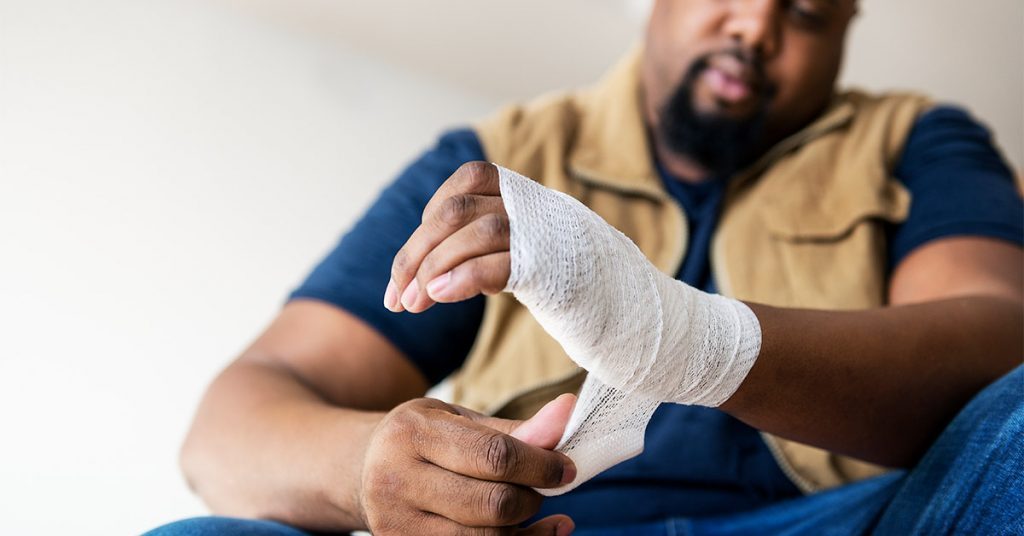Hand and finger injuries in the workplace are an ongoing concern. Suppose you’ve been following all the safety guidelines, rules, and regulations. What else can you do to keep your workers’ hands and fingers safe?

It seems that no matter how careful your workers are, somebody is always coming to you with a reportable incident of a hand or finger injury. Whether it’s a smashed fingernail from hammering, a cut from a utility knife, or a crush injury from getting a hand or finger caught in a pinch point
In order for your workers to follow your advice on how to keep their hands and fingers safe in a dangerous operational environment, you have to become a leader.
Don’t just give lip service to the safety literature, reading it aloud at a safety or staff meeting before rushing on to your next topic. Give your workers real-life examples of incidents that have had life-changing effects on workers in your own organization or workers on similar job sites. Even a short internet research session will give you plenty of material to use.
If you can make them realize that they are just one inattentive moment away from the type of injury that could have a lasting impact on their health, finances, family, and livelihood, you’ll capture their attention. Then incorporate those real-life examples into some of these activities:
- Hold safety demos for all your dangerous machinery.
- When you hold safety meetings, stress hand and finger safety awareness.
- Give impromptu safety talks out on the floor, especially if you catch a worker in an unsafe practice.
- Issue personal protective equipment (PPE).
- Issue safer tools.
- Lead the way to hand and finger safety.
The more you stress the importance of hand and finger safety awareness, the more likely your workers are to pay attention and keep their hands and fingers out of harm’s way.
Let’s Talk Tools
The first three items on the above list involve worker awareness. After you show them the dangers in their working environment and explain how to decrease the risks, and then it’s up to them to maintain hand and finger safety awareness as they do their jobs. Using the appropriate PPE is a given, if they want to stay safe, and all you have to do is monitor their compliance.
But what about using safer tools as a means of controlling the risk of laceration and puncture injuries in the first place? If you choose safer tools, you are getting ahead of the problem.
Do your workers use utility knives? Slice makes an entire line of utility knives that use unique, finger-friendly blades keep your workers’ hands and fingers safer from the types of cuts that occur during incidental contact, if you are using a traditional blade.
The same is true of box cutters. Metal blades in box cutters become dull very quickly and need frequent replacement. Blade replacement is when many hand and finger injuries occur. In addition to a proprietary safety edge, Slice box cutters come equipped with rounded-tip safety blades as an added guard against punctures..
Leadership Matters
Preventing hand and finger injuries in the workplace is more than a matter of talking to your workers; you have to lead the way and demonstrate your concern for their wellbeing. One way you can do this is by leading them in simple, three-minute hand and finger exercise sessions. If you’re stuck for ideas, use videos such as this:
Although not addressed to an industrial audience, these exercises would make a good pre-work warm-up. It would also make a great mid-day break session. After all the hand and finger stressors of their workday, leading your workers through these exercises at the end of their shift would help relieve muscle tension and help them relax before they head home. At the same time, it demonstrates that you’re serious about hand safety.
For less than ten minutes each day, you can demonstrate concern and help to keep your workers’ hands and fingers limber, flexible, and less prone to injury. Check out this article if you want to further examine the benefits of worker stretching.
No matter which method, or combination of methods, you choose, paying attention to your workers’ work habits and leading the way in safe practices will reduce the number of hand and finger injuries in the workplace.




